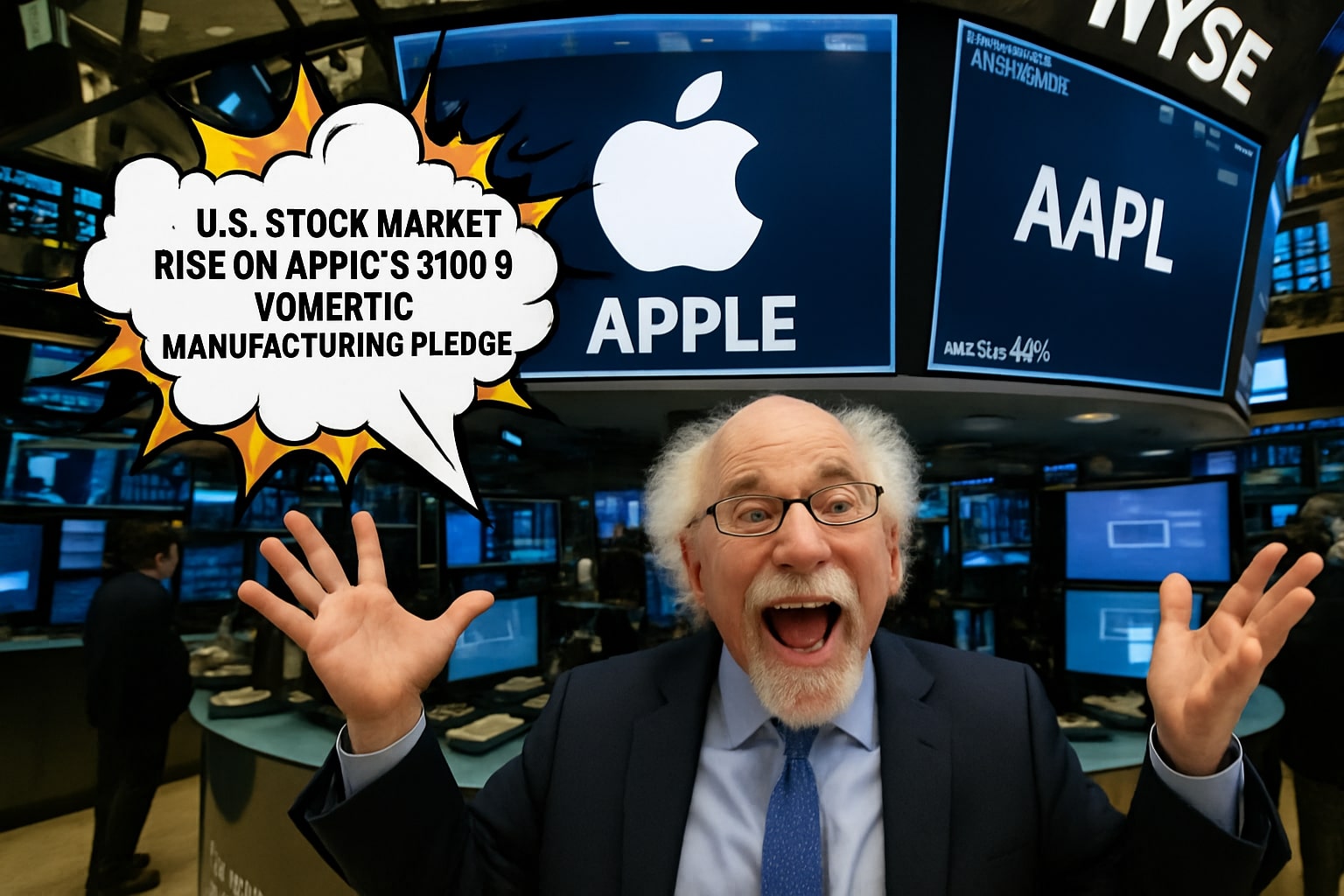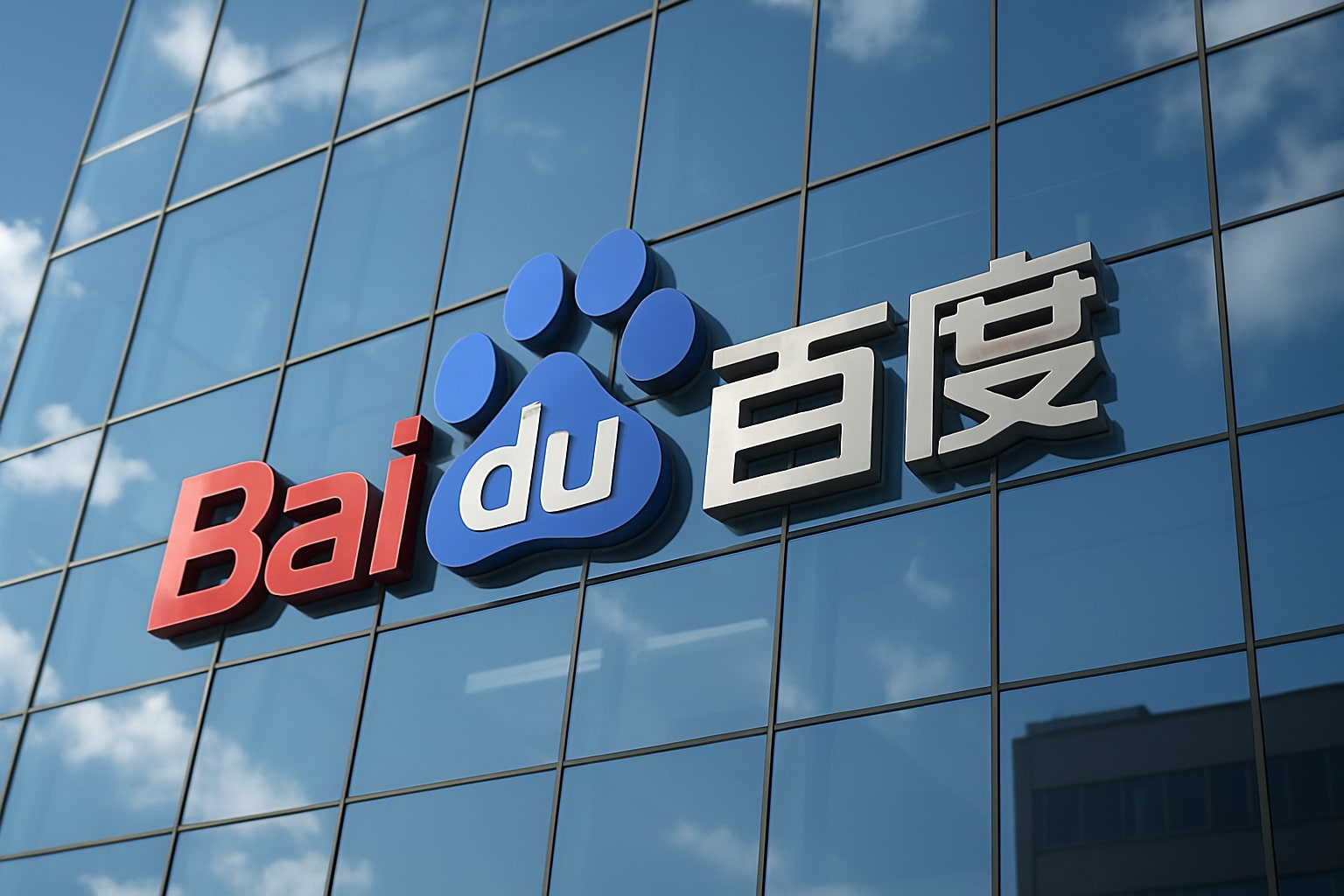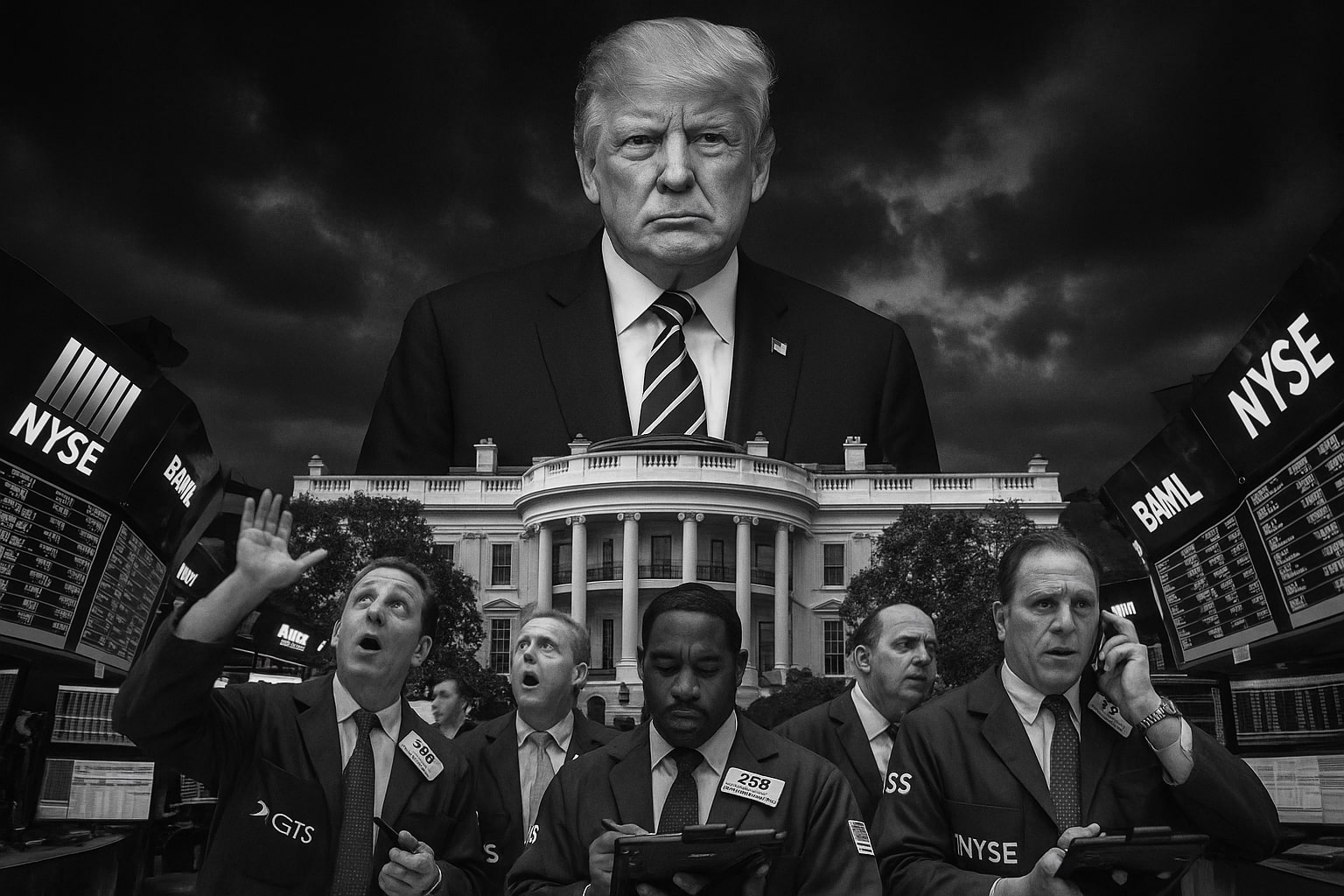
U.S. Stock Market Rise on Apple’s $100 B Domestic Manufacturing Pledge
S&P 500 up 0.68% and Nasdaq +0.98% even as 50% India tariffs and uneven corporate results temper investor optimism | That's TradingNEWS
Market Pulse and Macroeconomic Backdrop
Global equities kicked off Wednesday’s session on a cautiously optimistic note, with the S&P 500 climbing 0.68 percent to finish at 6,341.93, the Nasdaq Composite rising 0.98 percent to 21,121.30, and the Dow Jones Industrial Average adding 110.31 points, or 0.25 percent, to close at 44,222.05. Despite the relief rally, small‐cap stocks underperformed, as the Russell 2000 dipped 0.29 percent to 2,219.12, while the CBOE Volatility Index (VIX) retreated 5.15 percent to 16.93, signifying a moderation in hedging demand. In fixed income, the U.S. 10-year Treasury yield edged higher to 4.242 percent, reflecting investor recalibration ahead of a $42 billion auction. Commodities were mixed: West Texas Intermediate crude added 0.29 percent to $65.35 per barrel, Brent jumped 1.2 percent, gold inched up to $3,435.80 (+0.03 percent), and Bitcoin rallied 1.31 percent to $115,115.99, underscoring the bifurcated risk appetite across asset classes.
Tariff Turbulence and Central Bank Crossroads
President Trump’s announcement of an additional 25 percent levy on Indian imports—effective in 21 days—elevates the total U.S. tariff on Indian goods to a prohibitive 50 percent. The move, officially justified by India’s continued purchases of Russian oil, risks complicating supply chains for automakers and technology suppliers, and echoes earlier punitive measures against Brazil and the EU. Against this backdrop, Minneapolis Federal Reserve President Neel Kashkari reiterated his expectation for two rate cuts by year-end, while acknowledging that the inflationary impact of tit-for-tat levies may unfold over subsequent quarters. Market participants have thus entered a “wait-and-see” mode, balancing the prospect of easier monetary policy against the uncertainty of escalating trade barriers.
Tech Titans Drive Domestic Investment Narrative | AAPL Performance
Apple Inc. (AAPL) served as the fulcrum of Wednesday’s gains, surging 5.69 percent to $214.46 after a White House official confirmed an additional $100 billion commitment to U.S. manufacturing—lifting the company’s four‐year domestic investment to $600 billion. The announcement arrives as Apple navigates a projected $1.1 billion tariff headwind this quarter, following an $800 million hit in Q2. With gross margins firmly above 40 percent and no significant insider selling reported, Apple’s reshoring strategy not only mitigates trade‐war risk but also underscores a bullish outlook on capital returns and supply‐chain resilience. On this basis, AAPL merits a Buy recommendation.
Networking Infrastructure Upswing | ANET and VSAT Outperformance
Arista Networks (ANET) rallied 17 percent after exceeding second-quarter revenue expectations, buoyed by accelerating cloud data‐center deployments and subscription software growth. The company’s ability to expand operating margins amidst intensifying competition highlights its entrenched position in high-performance switching. Similarly, Viasat (VSAT) leapt more than 24 percent—its strongest one-day surge in years—following a fiscal Q1 EPS of $0.17 versus a consensus estimate loss of $0.65, on revenue of $1.17 billion ahead of the Street’s $1.13 billion forecast. Viasat’s rebound signals robust demand for satellite broadband and government communication solutions. Given these catalysts, ANET and VSAT both earn Buy ratings.
Semiconductor Sector Volatility | AMD, SMCI, NVDA Outlook
The semiconductor landscape presented a mixed narrative. Advanced Micro Devices (AMD) slipped 6 percent to $162.81 despite reporting Q2 revenue of $7.69 billion—above the $7.40 billion consensus—because adjusted EPS of $0.48 narrowly missed the $0.49 estimate, largely due to a U.S. export restriction that removed $800 million in MI308 AI‐chip sales to China. Super Micro Computer (SMCI) declined 17 percent premarket after Q4 revenue of $5.76 billion missed the $5.91 billion forecast and EPS of $0.41 fell short of $0.44. In contrast, Nvidia (NVDA) remained flat (+0.03 percent), as investors positioned ahead of its late-August earnings. While AMD’s product roadmap and AI partnerships inspire a Hold stance, SMCI’s execution gap warrants a Sell, whereas NVDA’s leadership in GPUs and data‐center AI projects supports a Hold.
Social Media and Enterprise Software Divergence | SNAP, PLTR Contrasts
Snap Inc. (SNAP) endured a 17 percent retreat after Q2 revenue of $1.34 billion missed the $1.35 billion consensus, hampered by an ad‐platform pricing glitch and Ramadan‐related seasonality. User engagement metrics underwhelmed, marking the slowest revenue growth pace in over a year. Conversely, Palantir Technologies (PLTR) sustained a post‐earnings pop of nearly 8 percent, driven by a stellar Q2 beat on government and commercial contracts, reinforcing investor confidence in its AI‐driven analytics suite. The stark divergence underscores that SNAP faces structural ad‐market headwinds—prompting a Sell recommendation—while PLTR’s secular AI adoption positions it for further appreciation (Buy).
Consumer Discretionary & Staples Dynamics | MCD, GO, BLMN
McDonald’s Corporation (MCD) rose over 3 percent in premarket trading after Q2 adjusted EPS of $3.19 outpaced the $3.15 estimate and revenue of $6.84 billion exceeded the $6.70 billion forecast. Global comparable sales climbed 3.8 percent—including a 2.5 percent U.S. same-store growth turnaround—underscoring effective value promotions and menu innovation. Grocery Outlet Holding Corp. (GO) soared 38 percent post-earnings, with Q2 EPS of $0.23 surpassing the $0.17 consensus and raising full-year guidance on sustained margin leverage. In sharp contrast, Bloomin’ Brands (BLMN) plunged 28.4 percent as lackluster guidance for the current quarter overshadowed a modest Q2 beat. The disparate outcomes justify Buy ratings for MCD and GO, and a Sell for BLMN.
Mobility and Ride-Sharing Trajectories | UBER and VSAT Revisited
Uber Technologies (UBER) experienced a muted 1.3 percent dip despite Q2 revenue of $12.65 billion topping estimates and EPS of $0.63 matching consensus, driven by a robust 18.2 percent rise in gross bookings. The unveiling of a $20 billion share buyback and raised Q3 bookings guidance signal management’s confidence in sustained demand across mobility and delivery segments. This strategic capital return, coupled with an expanding “Uber One” subscriber base, warrants a Buy rating for UBER.
E-Commerce Titans & Meme-Stock Dislocations | SHOP, OPEN
Shopify Inc. (SHOP) shares jumped nearly 20 percent as Q2 revenue of $2.68 billion, up 31 percent year-over-year, crushed the $2.55 billion consensus. The company’s commitment to AI and product investments underpins a mid-to-high-20 percent revenue growth forecast for Q3, far surpassing the Street’s 21.7 percent estimate, meriting a Buy stance. Conversely, Opendoor Technologies (OPEN) plummeted 19 percent after issuing Q3 revenue guidance of $800–875 million—a 36 percent year-over-year decline—despite a Q2 top-and-bottom-line beat. The abrupt shift from meme-stock darling to valuation rerating compels a Sell recommendation.
Electrification and Auto Under Trade Strain | LCID, RIVN, HMC
Lucid Group (LCID) shares fell 8.9 percent after CEO Marc Winterhoff admitted that the Gravity SUV production ramp has fallen behind schedule, though he expects a “drastic” acceleration in H2. Rivian Automotive (RIVN) declined over 3 percent despite Q2 revenue of $1.303 billion marginally beating forecasts; losses widened to $0.97 per share, and full-year adjusted EBITDA‐loss guidance was increased to $2–2.25 billion due to EV tax-credit phaseouts and 25 percent auto tariffs. In the traditional auto space, Honda Motor Co. (HMC) bucked the trend, rising 2.45 percent after reporting a 50 percent drop in Q1 operating profit to ¥244.2 billion, yet raising its full-year forecast and trimming projected tariff costs to ¥450 billion. The execution and policy headwinds justify Sell ratings for LCID and RIVN, while HMC earns a Hold.
Biotech Polarization | NVO and NVAX Tales
Novo Nordisk A/S (NVO) slipped 2.5 percent as Q2 EPS of $5.96 and revenue of $11.95 billion narrowly missed estimates, despite blockbuster Wegovy and Ozempic sales of $7.9 billion. Ongoing copycat lawsuits and tempered growth forecasts cloud the outlook, meriting a Sell stance. Meanwhile, Novavax, Inc. (NVAX) soared 13.89 percent on Q2 revenue of $239 million—bolstered by a $175 million milestone payment—and an upward revision to its full-year adjusted revenue projection. With traditional protein-based vaccines carving out a niche, NVAX secures a Buy recommendation.
Having meticulously traversed global indices, macro policy catalysts, corporate earnings across technology, consumer, mobility, EV, and biotech sectors—anchored by precise numbers, tariff impacts, and insider signals—our synthesis underscores a selective Buy bias for AAPL, ANET, VSAT, PLTR, MCD, GO, UBER, SHOP, and NVAX; Hold recommendations for AMD, NVDA, and HMC; and Sell verdicts on SMCI, SNAP, BLMN, OPEN, LCID, RIVN, and NVO, based on execution gaps, overextended valuations, and margin headwinds.
That's TradingNEWS
Read More
-
Baidu Stock Price Forecast - Bidu at $120 AI, Chips and Robotaxis Clash With China Macro Fears
15.12.2025 · TradingNEWS ArchiveStocks
-
XRP Price Forecast - XRP-USD Holds $1.90 Support as Bulls Target a Break Toward $2.60–$2.70
15.12.2025 · TradingNEWS ArchiveCrypto
-
Oil Price Forecast - Oil Slip Toward $60 as Oversupply Grows and Tanker Rates Explode
15.12.2025 · TradingNEWS ArchiveCommodities
-
Stock Market Today - Dow, S&P 500 and Nasdaq Futures Climb as Gold and Tsla Stock Jumps and Wall Street Awaits Jobs Data
15.12.2025 · TradingNEWS ArchiveMarkets
-
GBP/USD Price Forecast - Pound Holds 1.34 Ahead of BoE 3.75% Cut and Key US Jobs Data
15.12.2025 · TradingNEWS ArchiveForex


















